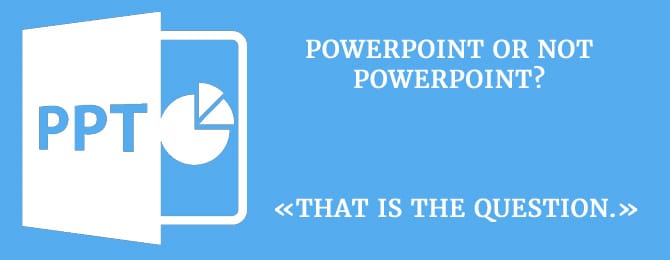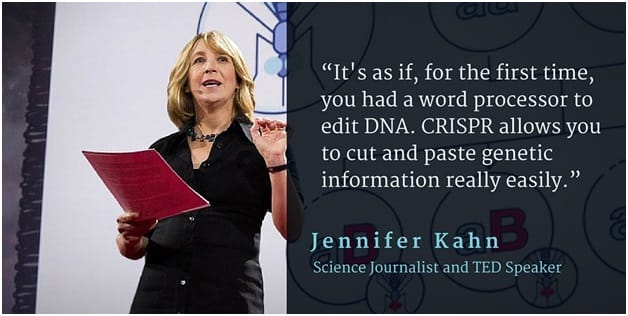You’re feeling like you can’t breathe, you’re sweating uncontrollably, your heart is beating like a drum, and it seems like you’re going to pass out now in front of the whole audience.
If you’re one of the many people who suffer from public speaking anxiety, learn and make use of these 10public speaking skills to achieve the necessary level of confidence, persuasion, and leadership to wow any crowd.
Make sure you check out other articles for more smart study and career tips on our website.
👁 Step #1. Know who you’re speaking to
Wondering how to improve your public speaking skills? Start with solid preparation. When getting ready for your speaking performance, the very first thing to do is to get a full dossier on the people you’re going to deliver your speech to.
Think about it this way:
Wouldn’t it be awkward to talk about the awesome sound of brand new headphones in front of hearing-impaired people? What about giving a presentation about Shakespeare at a math conference? And how would Muslims react to your “5 Best Ways to Cook Pork”?
When preparing your speech, consider these six simple questions to keep yourself from looking silly:
Who? Learn as much information as possible about your audience in advance. You want to know things like the size of the group, the age of your listeners, their economic and educational status, and their attitudes towards you (friendly or hostile?).
What? What does your audience already about your subject? What else can you tell them? What impact do you want your speech to have on them?
When? When does your talk take place? Will it be after a long day of work or study when everyone really just wants to go home? Or will it happen during a short break when you need to give your maximum with the minimum at your disposal?
And here’s a few more questions to ask to give an outstanding speech:
Where? Where are you going to give your speech? At a lecture hall or in a college amphitheater? On a huge stage or in a small room?
Why? Why are these people here? Did they come to listen only to you, or are there 10 more speakers? Were they willing to come or were they forced to?
The last (but not least) question that will help you develop your public speaking strategies is this:
How? How can I achieve the desired result?
Most of the answers will be obvious to you already, but others will require some research and observation. However, the little bit of extra work is definitely worth the trouble.
🎙 Step #2. Know what you’re going to talk about
Brian Tracy, author of many books in sales, human productivity, and time management, paraphrasing Ernest Hemingway, said:
Make sure you do good research about your topic and get ready for the Q-and-A part of your speech. You won’t know everything, and that’s okay–you’re not Google after all—but it is to your advantage to learn as much as you can before your speech.
Are there any techniques for an excellent research process? Of course!
First, find trusted sources on your topic. For this purpose, you may need credible search engines:
- Google Scholar is a fantastic tool every student should use. It is an enormous library of all public articles, books, and journals on any topic.
- Microsoft Academic contains more than 190 million publications. Among them you will find statistics, journals, affiliations, and more.
- WorldWideScience.org is a place where you can use an advanced search to find the most appropriate information in dozens of scientific journals.
Second, you may want to search credible sources like World Health Organization, U.S. Food and Drug, or Physics.org. Finally, you may want to talk to an educator or influencer. If you discuss specific concepts and ideas on your topic with an expert, your presentation will strike the audience as more credible with convincing facts. Don’t have the time or opportunity to reach influencers? Then, use the power of the internet! Enhance your knowledge by watching lectures and video conferences, listening to podcasts, and reading interviews. Go to a free essay database to see how other students construct their speeches.
And to do that without sacrificing too much of your valuable time, you may want to consider some boost your productivity tips.
📝 Step #3. Make simple presentations
Most people think that a good presentation has to be complicated and contain dozens of slides with enormous amounts of data. Data that no one ever reads or understands, and that definitely no one remembers!

The year 2016 is the year when you can forget about PowerPoint with peace of mind. Public speaking experts insist that presentations with slides are not worth the effort. People remember a very small portion of everything they hear, so don’t complicate your life. Instead, write down your speech and make sure that it has a clear introduction, an interesting middle part (better if done according to the Rule of Three), and a helpful summary. Your speech will only be memorable if you spend this extra time for presentation skills training.
After all, you don’t want this situation to happen to you, do you?
But there is good news for those who don’t like PowerPoint’s interface—use one of many excellent online services instead. Here are a couple of those:
Here are a couple of those:
- Piktochart – a free tool for presentations, infographics, and printouts. It has such benefits as attractive patterns, hundreds of vector images, various fonts, and a collection of stock images. You can not only use its patterns for your slides but also learn a lot of new techniques on presentation design, like the usage of frames or the choice of appropriate fonts.
- Canva – a helpful service in education, business, and daily life. You can develop a creative infographic, presentation, or happy birthday postcard in 20 minutes. It offers a comprehensive list of custom images—more than 1 million items to choose from, including fonts and patterns.
- Visme is another presentation making tool. You don’t need to spend time mastering design skills, just use one of their patterns and add your statistics, videos, and images. Publish your presentation online or share it with your audience.
Use these or other online services if you’re not a fan of PowerPoint. It usually takes less time and is much more fun!
👂 Step #4. Connect with your audience
One of the most important public speaking skills is the ability to connect with the audience. Your speech will hardly have any effect, no matter how wonderful the content is, if you look or act detached.
But here’s the deal:
Luckily for you, you already have three very simple and effective means of non-verbal communication: your eyes, your smile, and your enthusiasm.
- Establish eye contact with your audience as soon as you walk on the stage and maintain it throughout the whole performance. Here’s an awesome trick: Choose someone on the right side of the audience and keep eye contact with her. Everyone on that side will think you are talking to them! Use this technique to interact with the left part of the audience as well.
- Keep smiling. A smiling person projects confidence (even when he feels absolutely the opposite) and makes everyone smile back.
- Be enthusiastic. It’s crazy how contagious any idea can be when a person talks about it with genuine enthusiasm and interest.
😊 Step #5. Appeal to emotions
Your ability to influence people’s emotions considerably determines the effectiveness of your presentation skills. It is a proven fact that emotions affect long-term memory, having a huge impact on our ability to recollect information over time.

Here how it works:
The stronger emotions you can trigger in people, the more receptive they’ll be to what you say and the more likely they are to remember it.
This doesn’t mean that your performance should turn into a play (although in some cases that may be a great strategy), but it does suggest some easy tips for you:
- Be honest and open;
- Show your vulnerability, whether it’s a disease you’ve overcome, a bad childhood, or your strange passions;
- Express emotion by using different volumes, intonations, and gestures;
Be inventive!
😂 Step #6. Learn to be funny
By telling jokes and anecdotes, you can warm up the audience and blend the information traffic. You should definitely include funny tidbits every few minutes just to relax the atmosphere and give people time to digest what they’ve just heard.
A truly amazing example of how humor can fit into a presentation without ruining its seriousness is Ken Robinson’s TED Talk, “Do schools kill creativity?” According to calculations made by Carmine Gallo for Forbes, Sir Robinson’s talk received about 2 laughs per minute—almost as many as “The Hangover” (which got 2.5 laughs per minute)! https://embed.ted.com/talks/ken_robinson_says_schools_kill_creativity
And if your first thought right now is “I am not funny at all,” try to use these humor training tips. You may surprise yourself!
For example:
- Use personal experience. It doesn’t matter if you’re a comedian or a college student, everyone can find something funny in their everyday routine to put into the presentation.
- Put jokes into your presentation. It’s a perfect option for those who have a fear of public speaking. It may be difficult for you to tell a joke, but you can always include a meme or a funny gif into your slides.
- Use quotations. Is joke development a challenging task for you? Then, you may use an existing popular quote or joke. Don’t forget to mention the author though!
🗣 Step #7. Tell stories
It’s really easy to learn how to get better at public speaking if you just consider the words of Columbia University Professor Jane Praegar:
“People struggle so mightily writing speeches when all they have to do is find a message and three great stories to prove it.”
Some of the best examples of effective communication skills through telling stories were shown by Steve Jobs in his Stanford commencement speech in 2005 and Michelle Obama in her speech at the Democratic National Convention in 2012. These two speeches, fully consisting of personal stories, caused a frenzy in audiences around the world.
And if you just haven’t had that many heart-touching moments in your own life, use these classic storytelling techniques instead.
For example:
- Base your story on a conflict. This is a trick used by professionals and newcomers. Every encounter involving people, values, or beliefs gives you a strong foundation for narration.
- Create hooks. Include fascinating hooks in your story to attract your audience’s attention. Almost all successful presentations use this strategy.
- Use models. There are several models you can use in your speech—patterns you may find in many stories. For example, a hero’s journey.
✨ Step #8. Stay clear in your communication
Elizabeth Kuhnke, author of the book Communication for Dummies, said on her blog:
“No matter how smart you are, how powerful your message, and how compelling your story, if you can’t be understood you might as well send a memo.”
It’s very common to start speaking quickly when you are nervous. As a result, you swallow sounds or entire words, get lost in the content, and make yourself even more nervous.
But take a breath, break this vicious cycle, and learn how to be clear in communication:
- Do warming up vocal chords exercises before delivering the speech.
- Speak at a moderate pace. Thoroughly pronounce your words, keeping in mind your intonation. If you notice that you are starting to speed up, take a pause, drink some water, and then continue.
- Make sure that you think before you speak. No one wants to listen to indistinct or rambling speech.
- Remove filler words like “um” and “uh.” Each time you feel the necessity to fill your speech, just make a short pause instead.
💡 Step #9. Concentrate your presentation on one major idea
Accept the fact that it will be impossible to fit everything you want to say on the topic into your speech. In fact, one of the features of good speaking skills is the ability to pick a specific important idea and concentrate the whole speech on it. Share examples and tell stories to prove it.
By the way:
Some essay writing tips may do you good service when dealing with this part of your speech. After all, a speech is just like an essay: clear, organized, and focused. Don’t be afraid to use anything and everything that can be helpful during your preparation.
⭐ Step #10. Explain difficult terms in simple words
Here’s the thing:
Your audience might be totally unfamiliar with the terms and concepts that seem clear to you, so you need to build a kind of mental bridge to transfer your ideas to them. And the best way to do that is to keep it simple. Use common words, expressions, metaphors, and comparisons—let them understand you and actually picture what you are talking about.
In her TED speech on gene editing, Jennifer Kahnspoke about a new biotechnology called CRISPR, or clustered regularly interspaced short palindromic repeat.
Sorry, what?
Look at how she explained it:

Now isn’t that easier to understand?
Practice makes perfect.
Don’t ruin your outstanding performance by being lazy.
Stop wondering about how to improve speech skills and simply start practicing. The simple fact is that your presentation skills won’t get better themselves.
Here are 9 more smart public speaking practice tips:
- Write down your speech and make a bulleted list of your narrative.
- Read the speech several times. Learn it but don’t memorize it exactly. You are going to share your ideas, not recite the digits of pi by memory.
- Use your bulleted list as a guide.
- Another great tip on how to develop speaking skills: Speak on camera. It may seem awkward, but by doing so, you will have an opportunity to hear and see yourself, to analyze your mistakes (both verbal and non-verbal), and to improve your techniques and strategies. Film and watch your speech as many times as you need to.

- Speak in front of your friends or relatives. Pay attention to how they act when listening to you. If they are bored, notice it. Ask for their honest feedback after your performance so that you can learn how to improve.
- Ask your teacher/tutor/director/boss to give you an opportunity to deliver a speech in front of your group, classmates, colleagues, or even strangers. Field trainings are known to be very effective in developing speaking techniques.
- Keep practicing until your public speaking skills start to slowly improve. And then what? Continue practicing!
You might watch politicians, businessmen, celebrities, and other masters of the spoken word and think, “I can never be as good! They were born with this ability!” But now you can see that this is far from the truth. They haven’t inherited this craft. They’ve devoted countless hours, days, weeks, or even months to practicing everything from what they are talking about to how they look, stand, or move.
It’s crazy, but:
Every gesture, pause, or hesitation is carefully considered and rehearsed to make it look and sound smooth and natural.
So keep practicing your public speaking skills—and remember the words of a true master of language Ralph W. Emmerson:
“All the great speakers were bad speakers at first.”



